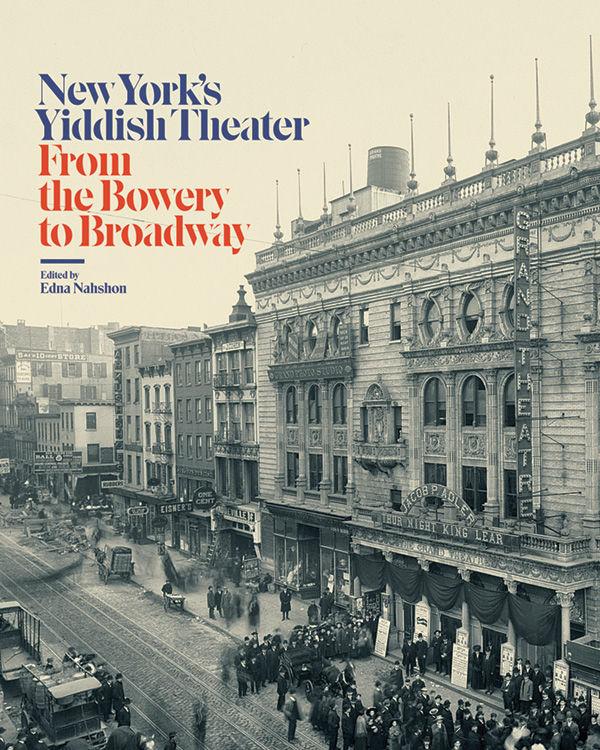Book, exhibit celebrate New York’s Yiddish Theater
Published July 13, 2016
One of the great ironies in the entertainment world is the endurance of a fear that a play, film or TV show might be “too Jewish” for general audiences.
Broadway and Hollywood owe their very existence to their roots in Yiddish theater, a fact that is celebrated in a handsome, book-length catalog for “New York’s Yiddish Theater: From the Bowery to Broadway,” a major exhibit that runs through Aug. 14 at the Museum of the City of New York.
The lush companion book for the exhibit is not only a comprehensive guide to this historic compilation of memorabilia of New York’s legendary Yiddish theater scene, but also a handsome and hefty coffee table volume. Written with scholarly attention to detail and edited by exhibit curator Edna Nahshon, the book is as entertaining as New York’s once-thriving Yiddish theater.
ADVERTISEMENT
Tracing the Bowery-to-Broadway trajectory of Yiddish theater, which thrived from the late 19th to the early 20th centuries, the book notes that it “blossomed on Manhattan’s Lower East Side, entertaining over 1.5 million first- and second-generation Eastern European Jewish immigrants.”
Second Avenue “became the ‘Yiddish Broadway,’ where audiences of New Yorkers celebrated their culture and learned about urban life in the city via cutting-edge dramas, musical comedies and avant-garde political theater.”
The book chronicles in great detail the rising popularity of the major stars of Yiddish theater, many of whom gained mainstream theatrical popularity and acclaim. A young Yiddish theater actor, Julie Garfinkle, was renamed John Garfield when he moved to Hollywood from Broadway.
ADVERTISEMENT
The precious legacy of the Yiddish stage continues to resonate in theater, film and TV. Stars such as Zero Mostel and Luther Adler, the first two actors to portray Tevye in “Fiddler on the Roof,” were veterans of the Yiddish stage, and “Fiddler” itself is based on the stories of Jewish life in Russia and Ukraine by Sholom Aleichem.
Other major stars of Yiddish theater discussed in the book and featured in the exhibition include Molly Picon, who moved from being a superstar on the Yiddish stage to a similar status in classic Yiddish movies, and then to a successful career in mainstream plays and films.
Susan Henshaw Jones, in the book’s Director’s Foreword, writes that Yiddish theater “forged a New York-style humor and ‘Yiddish-isms’ that made their way into the American comedy vernacular via the Borscht Belt in the Catskill Mountains, where vaudevillians and comedians from Danny Kaye to Sid Caesar to Jerry Lewis launched their showbiz careers.”
In addition to major actors who crossed over from the Yiddish to mainstream stage and screen, countless directors and scene designers found work on Broadway and in Hollywood.
Jones writes that the book and exhibition “has all to do with New York’s art and culture and because the City Museum’s holdings include a splendid Yiddish Theater collection, comprised of posters, prints, drawings, costumes and many other artifacts.”
She credits David Chack, president of the Association for Jewish Theatre, for having urged the sponsors to take on this important topic.
The book is lavishly illustrated with vintage photos, play bills, posters and photographic profiles of Yiddish theater stars throughout it 324 pages. Any serious student or fan of American theater and Jewish culture should have a copy of this significant book. And if you get to New York before Aug. 14, take in this remarkable and memorable exhibit.
















